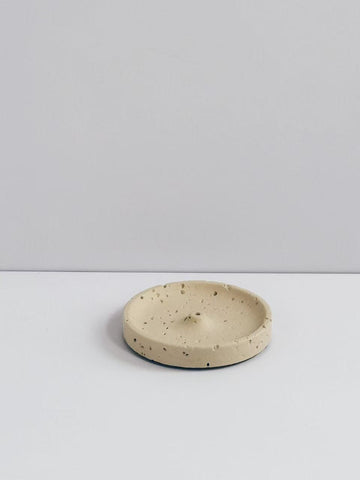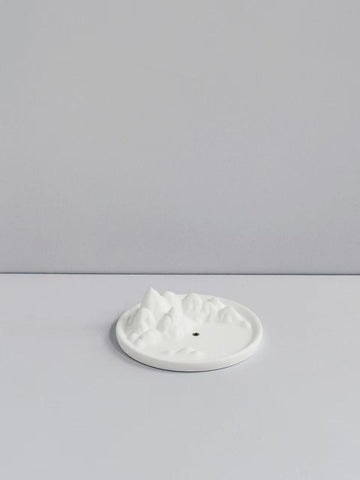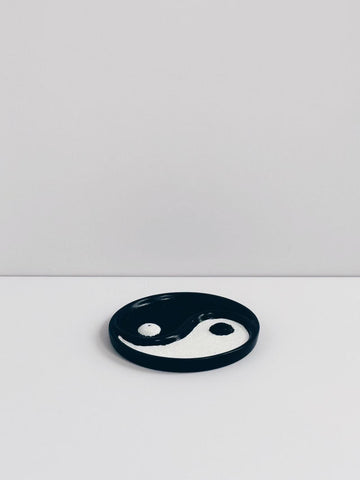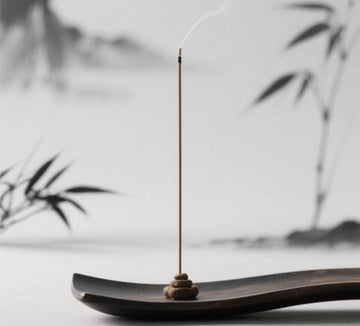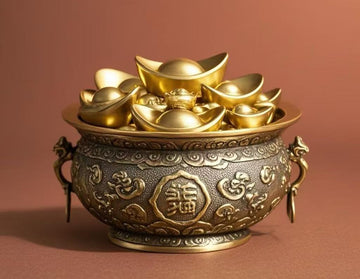When creating a calming atmosphere or adding fragrance to a space, two common options often come to mind: incense and candles. Both are beloved for their ability to enhance moods, stimulate memories, and elevate everyday environments. However, for individuals mindful of health, natural living, and spiritual ambiance, a deeper question arises — is incense better than candle?
This comprehensive guide explores the answer by comparing incense and candles across multiple dimensions: health and air quality, ingredient purity, scent diffusion, aesthetic impact, cultural significance, and environmental footprint. Whether you’re choosing tools for meditation, relaxation, or simply want a better-smelling home, understanding the nuances of these two aromatic options will help you make an informed decision.
1. Ingredients and Purity: What Are You Really Breathing?
The most significant distinction between incense and candles lies in their composition. While both can range from natural to synthetic, incense — particularly traditional or artisanal varieties — tends to be purer in form.
Incense: A Natural Offering to the Senses
High-quality incense is often made from a blend of natural resins, wood powders, herbs, essential oils, and plant-based binders. Pure incense, such as agarwood, sandalwood, or frankincense, is typically free of synthetic additives, allowing for a clean, elemental burn.
Traditional incense, especially Chinese and few Japanese types, uses minimal to no chemical accelerants. When made with artisanal techniques, the incense is usually rolled by hand or extruded without glue, paraffin, or fragrance oils.
You can explore handcrafted natural incense like sandalwood, which emits a soft, grounding aroma without synthetic interference.
Candles: The Wax Dilemma
The modern candle market is flooded with synthetic options. Paraffin, the most common wax type, is a petroleum byproduct. When burned, paraffin candles can release volatile organic compounds (VOCs) such as toluene and benzene — both known irritants and possible carcinogens. Even soy candles, often marketed as “natural,” can contain fragrance oils and chemical dyes.
Additionally, the wicks may be treated with stiffeners or contain metal cores (such as zinc), which could introduce trace toxins into the air. Unless explicitly labeled as 100% natural and unscented, candles can contain hidden ingredients that affect air purity.
Verdict: Incense, particularly in its pure form, offers a cleaner, plant-based option with fewer synthetic risks compared to most candles.
2. Health and Air Quality: Smoke, Particles, and Respiratory Impact
One of the most debated topics when comparing incense and candles is the impact on health, especially concerning particulate matter (PM), combustion byproducts, and indoor air quality.
Incense Smoke: Ancient but Dense
Burning incense releases fine particulate matter (PM2.5), which can penetrate deep into the lungs. While studies have shown that regular incense burning in unventilated areas may contribute to indoor pollution, the composition and quantity make a significant difference.
Natural incense burns slowly and emits smoke that contains botanical oils and resins. In traditional settings, it is used in open or semi-open spaces, often alongside meditation or purification rituals. The potential irritant effect is generally lower with high-quality incense and proper ventilation.
Candle Emissions: Hidden Hazards
Candles also produce particulate matter, but in the case of paraffin candles, the combustion process releases a cocktail of soot and VOCs. These may build up on indoor surfaces and contribute to respiratory discomfort, especially for individuals with asthma or allergies.
Scented candles often include phthalates — chemical compounds that act as fixatives for synthetic fragrances and are linked to endocrine disruption. In enclosed spaces, burning synthetic candles regularly may significantly affect air quality.
Scientific Insight:
A study from South Carolina State University found that paraffin candles emitted toxic chemicals not found in candles made from vegetable-based waxes such as soy. Meanwhile, another study noted that burning incense emits higher amounts of PM2.5 than candles, but the content of the smoke — especially when natural — is vastly different in chemical makeup.
Verdict: Both incense and candles should be used mindfully. However, when choosing natural incense over synthetic candles, the exposure to toxic chemicals is considerably lower — especially when used in moderation and with good airflow.
3. Scent Throw and Longevity: Which Fills the Room Better?
Fragrance intensity and reach, often referred to as “scent throw,” are major factors when choosing between incense and candles.
Incense: Immediate, Directional, and Potent
Incense begins releasing fragrance immediately upon lighting. The smoke carries the scent in a directional manner, dispersing quickly throughout a space. Depending on the type and density of ingredients, incense can effectively fill even a large room in minutes.
Resin-based incense, such as copal or frankincense, produces a rich, sacred aroma that lingers for hours after extinguishing. Stick incense, especially those containing high levels of wood powders like agarwood or sandalwood, can impart a long-lasting scent that gently clings to textiles and wood surfaces.
Candles: Gradual and Subtle
Candles often take time to warm up and release fragrance. The scent throw depends heavily on wax type, wick size, fragrance concentration, and the room’s air flow. A high-quality candle may need to burn for 30 minutes before filling a room, and its scent may be subtler.
Soy or beeswax candles with essential oils provide a more natural aroma, but they often lack the intensity and speed of incense diffusion.
Verdict: Incense delivers faster and more impactful scent coverage, making it ideal for meditation, cleansing rituals, or quick ambiance shifts. Candles are better suited for prolonged background fragrance.
4. Aesthetics and Ritual: The Atmosphere They Create
The visual and symbolic presence of incense and candles creates dramatically different atmospheres.
Incense: Ceremonial and Mystical
The rising tendrils of incense smoke evoke a sense of sacredness, making it ideal for meditation, prayer, and spiritual practice. Across cultures — from Buddhist temples to Indian altars — incense has been used to symbolize the transcendence of thoughts, carrying intentions to the divine.
Even in modern spaces, the act of lighting incense can feel intentional, signaling the beginning of a focused activity or a transition between energies.
The dance of smoke also lends itself to incense reading, a spiritual practice in which the shape and movement of smoke are interpreted for energetic insight. This makes incense not just a scent tool, but an active participant in metaphysical environments.
Candles: Romantic and Comforting
Candles provide a steady, comforting glow, ideal for cozy, romantic, or introspective settings. Their presence suggests stability, warmth, and continuity. In many Western rituals, candles are used to represent hope, remembrance, or seasonal celebration (e.g., Advent, Hanukkah).
The visual element of a flickering flame, particularly when used in groups or combined with decorative holders, makes candles a common aesthetic choice in interior design.
Verdict: Choose incense for spiritual depth and transitional energy. Opt for candles when you want a soft, grounding atmosphere for relaxation or intimate conversation.
5. Environmental and Ethical Considerations
Sustainability is increasingly a factor in lifestyle decisions. When it comes to incense vs. candles, eco-impact varies widely depending on sourcing, manufacturing, and waste.
Incense: Low Waste, Plant-Based
Natural incense sticks are typically low in packaging, especially when sold in paper tubes or bundled in kraft sleeves. There are no wax remnants or glass containers to dispose of. Additionally, many incense materials — such as bamboo cores, herbal powders, and tree resins — are biodegradable.
However, ethical sourcing matters. Agarwood, for instance, must be harvested sustainably to avoid deforestation. Choose incense brands that emphasize responsible harvesting and transparent sourcing.
Candles: Wax Waste and Container Residue
Candles often come in heavy glass jars, which may or may not be recyclable. Paraffin wax is non-renewable and not biodegradable. Even soy candles, unless GMO-free and clean-burning, may involve intensive agricultural practices that impact land use.
Beeswax is a more sustainable candle option, but it may not be suitable for vegans or those seeking plant-based alternatives.
Verdict: Incense typically has a smaller environmental footprint, especially when sourced ethically and made without synthetic binders or excess packaging.
6. Cultural and Historical Relevance
The spiritual lineage of incense vastly predates that of candles. Understanding the historical context of each can help deepen your appreciation and clarify their roles in your personal space.
Incense: Timeless Ritual Across Civilizations
Incense has been used for thousands of years in China, Egypt, India, Tibet, and Japan — in temples, courts, and homes. It served to honor ancestors, purify surroundings, and create a bridge between the human and divine. The materials used (e.g., agarwood, myrrh, frankincense) were once as valuable as gold and traded across continents.
The ritualistic act of incense lighting remains deeply symbolic — a gesture of respect, attention, and intention.
Candles: Light in Darkness
Candles emerged later as a source of light before the invention of electricity. Their use in spiritual settings — from Catholic Mass to Kwanzaa — symbolizes guidance, remembrance, and presence. While candles can carry deep meaning, they are often more secular or decorative in contemporary life.
Verdict: Incense holds a deeper cultural and metaphysical weight, making it a more potent choice for those engaging in spiritual or contemplative practice.
Conclusion: Is Incense Better Than Candle?
While both incense and candles offer sensory pleasure, the better choice depends on your intention. For natural ingredients, rapid scent diffusion, and spiritual ambiance, incense is the superior option. When choosing natural, handcrafted varieties, incense becomes a powerful ally in health-conscious, meditative, and artistic lifestyles.
Candles may still suit moments that call for visual warmth, long-burning comfort, or quiet reflection. But for those seeking energetic clarity, mindful living, and authentic plant-based aroma, incense offers a deeper connection.
Ready to experience the benefits of natural incense? Explore traditional, handcrafted options like sandalwood from Memoricall’s Serene Mountain Incense Stick — made with pure botanicals and no synthetic additives.


